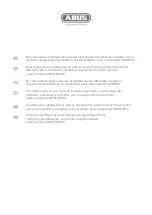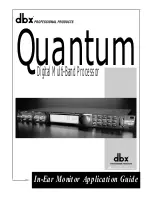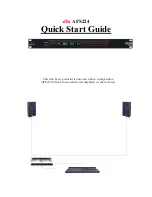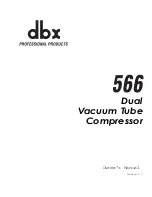
www.balluff.com
2
BTL5-A/C/E1_ -M _ _ _ _ -SF-F _ _
Micropulse Transducer - Rod Style
No. 863800 EN · G13; Subject to modification. Replaces B13.
english
Shielding and cable routing
Defined ground!
The transducer and the control cabinet must be
at the same ground potential.
Shielding
To ensure electromagnetic compatibility (EMC), observe
the following:
– Connect the transducer and controller using a shielded
cable.
Shielding: Braided copper shield with minimum 85%
coverage.
– On the transducer side, the cable shielding is
connected to the housing. Ground the cable shielding
on the controller side (connect with the protective earth
conductor).
Magnetic fields
The position measuring system is a magnetostrictive
system. It is important to maintain adequate distance
between the transducer/holding cylinder and strong,
external magnetic fields.
Cable routing
Do not route the cable between the transducer, controller,
and power supply near high voltage cables (inductive stray
noise is possible).
Cable length
The maximum cable length is 20 m (Ø 6-8 mm).
Bending radius for fixed cable
The bending radius for a fixed cable must be at least five
times the cable diameter.
Starting up the system
1.
Check connections for tightness and correct polarity.
Replace damaged connections.
2.
Turn on the system.
3.
Check measured values (especially after replacing the
transducer).
DANGER
Uncontrolled system movement
When starting up, if the position measuring system is part
of a closed loop system whose parameters have not yet
been set, the system may perform uncontrolled
movements. This could result in personal injury and
equipment damage.
►
Persons must keep away from the system’s
hazardous zones.
►
Startup must be performed only by trained technical
personnel.
►
Observe the safety instructions of the equipment or
system manufacturer.
Operating notes
– Check the function of the position measuring system
and all associated components on a regular basis.
– Take the position measuring system out of operation
whenever there is a malfunction.
– Secure the system against unauthorized use.
– Observe the directives of the FDA and 3-A SSI for
monitoring hygiene and cleaning of the device, as well
as the instructions for operation and maintenance of
the entire system. This especially applies to the
selection of sealants, which must be FDA and 3A
SSI-conformant, as well as temperature-resistant and
chemically resistant for the cleaning methods applied.
– Regularly check the entire device for damage and signs
of wear.
– Regularly check the rod for cracks (e.g. with a color
penetration test) and exchange it if damaged. This
especially applies if the sensor is subjected to heavy
product movements or other mechanical influences.
– It is possible to clean the device on-site (CiP
1)
).
– As part of a cleaning validation, the cotter pin and the
float must be removed and checked. Check the holes
in the float and all surfaces that come into contact with
the product for cleanliness and clean them, if
necessary. This also applies to the area near the
welded port. If cleanliness is not achieved, the cleaning
method must be adjusted.
1)
Clean in Place
Electrical connection
Output signals
1)
Cable
BTL5-A11
-C10
-C17
-E10
-E17
YE
Yellow
Not used
3)
0 to 20 mA
20 to 0 mA
4 to 20 mA
20 to 4 mA
GY
Gray
0 V
0 V
0 V
0 V
0 V
PK
Pink
10 to 0 V
2)
Not used
3)
Not used
3)
Not used
3)
Not used
3)
GN
Green
0 to 10 V
2)
Not used
3)
Not used
3)
Not used
3)
Not used
3)
Supply voltage (external)
1)
The connection assignments depend on the respective version.
2)
Because of the separate output drivers there are small voltage
differences between PK and GN (offset < 10 mV).
3)
Unassigned leads can be assigned to GND on the process controller
side, but they must never be connected to the shield.
Cable
BTL5-A/C/E1
BU
Blue
GND
BN
Brown
+24 V
WH
White
Not used
3)
74-06


































